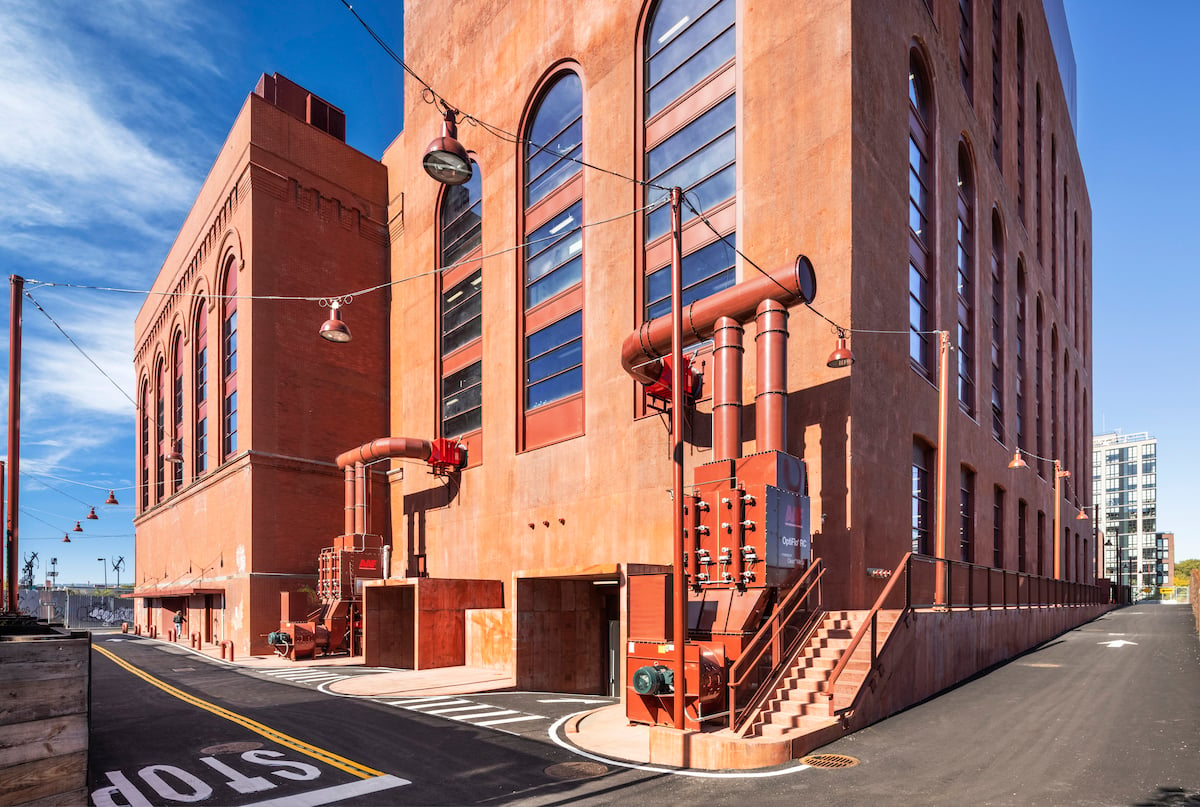
New York’s arts landscape just grew by one venue.
Powerhouse Arts, a nonprofit that offers production facilities for local artists, opened on Friday in a 170,000-square-foot industrial structure that overlooks Brooklyn’s Gowanus Canal.
The six-story, red-brick building, erected in 1904, was once the Brooklyn Rapid Transit Company’s central power station. The station was decommissioned in the 1950s, and by the early ’70s, the site was altogether abandoned. Its roof eventually gave way, and plants sprouted in its interior. In recent decades, the building became host to squatters, graffiti artists, and underground ravers—a period of time that earned the site its now-infamous nickname: the Batcave.
Philanthropist Joshua Rechnitz purchased the property in 2012, and has since given some $180 million through his foundations to overhaul it. Rechnitz formed the Powerhouse Environmental Arts Foundation (which has since been renamed Powerhouse Arts) and tapped two notable architecture firms to design the center: PBDW Architects and Herzog & de Meuron. (The latter firm, a Pritzker Prize winner, previously transformed London’s Bankside Power Station into the Tate Modern.)
Inside the turbine hall at the new Powerhouse Arts facility in Brooklyn, NY. Photo: Albert Vecerka, ESTO. Courtesy of Powerhouse Arts.
Now completed, Powerhouse Arts boasts fabrication facilities for ceramic, print, and public art, among other mediums, as well as space for education and events. The center’s offerings were developed in conversation with local creatives who described the challenges of being practicing artists in the city, Eric Shiner, Powerhouse’s newly hired president, told Artnet News last year.
“I was blown away by the staggering potential the organization has for making artists’ dreams come true,” Shiner said. “Powerhouse serves to amplify those voices in so many exciting ways. I liken this potential to that of Andy Warhol’s Silver Factory—a place where creative energy, innovation, and joy intermingled to create a vibrant arts ecosystem.”
Last week’s opening marked the culmination of years of work. But the challenge is just beginning for Shiner and his team, who have been tasked with securing funding after Rechnitz, the project’s primary benefactor to date, stepped away from the project last year.
Powerhouse will charge membership fees for artists using the facilities and will rent out the center’s spacious turbine hall for events, but additional income—from public grants, say, or private philanthropy—will be necessary too.
The new Powerhouse Arts facility in Brooklyn. Photo: Albert Vecerka, ESTO. Courtesy of Powerhouse Arts.
But artists, not donors or foundations, will be the driving force behind Powerhouse Arts, Shiner has said. He recently expanded the organization’s board by seven members, including artists Dread Scott and LaToya Ruby Frazier, according to the New York Times.
“Once artists see what we can make here, how we train and mentor the next generation of artists and makers, and how we welcome our neighbors to be a part of the organization’s evolution,” said Shiner. “I hope that the answer to this question of ‘why the arts needs Powerhouse Arts’ will become even more apparent.”
More Trending Stories: